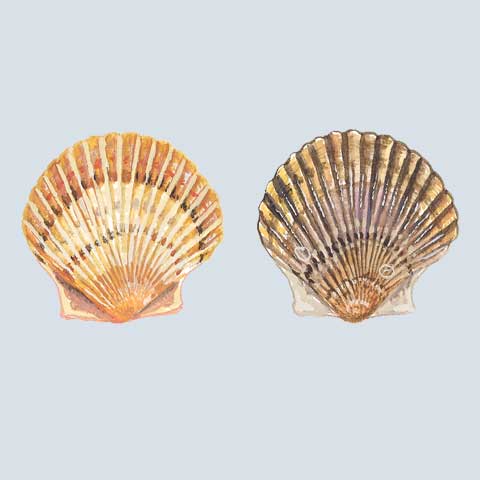Alaska scallopers fished on a guideline harvest level of 277,500 pounds of shucked meat for the 2020-21 season. That’s up from the GHL of 271,300 pounds from the year before. Harvests, however, have been declining, and the 2019-20 landings of 224,765 pounds were the lowest since the 1993-94 season.
Scallops mature into the fishery at 4 years old, and the Alaska Department of Fish and Game conducts population surveys in rotating areas each year, according to Andrew Olson, an area management biologist, in Yakutat. Of the management areas lying in the waters offshore of Yakutat, Kodiak, the Alaska Peninsula, Dutch Harbor and Bristol Bay, the area near Yakutat has maintained the highest GHL in recent years. The GHL for the Yakutat in the 2020-21 season had been set at 145,000 pounds, shucked.
Like many other fisheries, covid caused some ripples in this year’s season, primarily with lining up observers for the two vessels that fish the scallops in a cooperative harvest agreement. As per federal regulations, the scallopers operate under 100 percent observer coverage. This year that meant quarantining the observers before they boarded. After that, the season went off without a hitch and fishing began.
“They’ve already started into their harvest,” said Olson in early December. “They’ve already caught the GHL for Yakutat Area; so that’s closed down, and they’re fishing other areas right now.”
As for Alaska’s crop of razor clams, 2020 will go down as the year that they remained in the sand.
“The covid situation this last year made them not harvest anything,” says Brian Marston, area management biologist, in Soldotna. “They couldn’t logistically get their people up (from California to Alaska) here, all the people who actually catch the clams. They didn’t even dig last year at all.”
Through the years the average crew of clam diggers has numbered in the low 20s. They arrive at the western shores of Cook Inlet, near Polly Creek in time to hit the minus tides in April and dig the large clams in 10-day cycles. The clams are tendered via airplanes landing on the hard sand beach and ferried to processing facilities on the east side of Cook Inlet, which has a well-developed road system for transportation to end markets. The GHL for razor clams has remained relatively unchanged for years and has been set at between 350,000 and 400,000 pounds of shucked meat.







